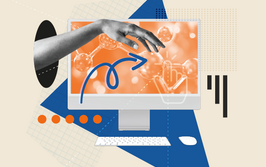
Success at Speed: Digging into Accelerated Vaccine Development
Part 8 – Lessons to be learned. What have we learned from the pandemic and how can we address the coming challenges?
Piergiuseppe Nestola, Amélie Boulais |
sponsored by Sartorius
The average vaccine, taken from the preclinical phase, requires a development timeline of around 10.71 years and has a market entry probability of 6 percent (1). So far, however, we are confident that we can develop a vaccine against COVID-19 much faster.
The industry has developed a strong pipeline of more than 300 candidates, relying on diversified strategies and platforms. From a statistical point of view, 18 of them should make it to the market! On the other side of the coin, many candidates will likely fail; we’ve already witnessed sharp intakes of breath at the potential side effects of AstraZeneca’s frontrunning vaccine.
Clinical trials are often halted because of adverse events that needs to be investigated before trials can continue, so the AstraZeneca pause should come as no surprise. However, it does emphasize just how difficult phase III can be.
Has COVID-19 changed the pharma industry – and vaccine development – forever?
Yes and no.
The world has changed, with daily life affected and disruption across the globe. COVID-19 has demonstrated how important investments in vaccines are, and will likely lead to an increase in global capacity for vaccine production. In the future, we will no doubt see vaccine makers getting more involved in preparedness initiatives – and for sure, a rich pipeline for a universal coronavirus vaccine (2).
The industry has demonstrated remarkable agility and perseverance thus far in bringing promising COVID-19 vaccines and treatments to the clinic – and there has been unprecedented collaboration.
At the very beginning of the outbreak, the genome of SARS-CoV-2 was sequenced and shared by scientific communities, so that vaccine developers could get to work. Our feeling is that the pharma industry will return to business as normal once the COVID-19 pandemic is over. The big difference may be the emergence of dedicated groups and funding availability – inside companies or as part of industry organizations – who will continue to work on pandemic preparedness.
We should never forget what the industry can accomplish when we all work together.
Even if a vaccine is approved quickly, there are still challenges to face:
- Meeting demand. A recent survey from the Coalition for Epidemic Preparedness Innovations (CEPI) estimated that the global manufacturing capacity for a COVID-19 vaccine in 2021 is 2–4 billion doses, but the world may need 8–16 billion doses (assuming two doses per person). As a comparison, the total global annual production of commercial vaccines is about 20 billion doses. A target of 2–4 billion doses is already ambitious. And if we re-purpose some facilities to produce the COVID-19 vaccine, we will stop the production of other vital drugs. And we simply do not have time to build large dedicated facilities to meet short term demand.
- Ensuring a robust supply chain of all necessary equipment/consumables/materials. What happens when the orders of vaccine manufacturers exceed supplier manufacturing capacity? We all heard about the bottleneck of glass vials, for example, and it’s possible that there will also be bottlenecks in syringes and packaging.
- Defining who gets the vaccine first. The COVAX initiative has been launched by CEPI, Gavi and the WHO to ensure equitable access to COVID-19 vaccines and end the acute phase of the pandemic by the close of 2021. But governments are placing huge orders for vaccines. If there aren’t enough doses for everyone, then we may need to decide who should have priority – a provocative topic.
- Ensuring worldwide distribution. Are global supply chains robust enough to transport the vaccine everywhere it is needed – including those countries that lack infrastructure and cold chain?

We must analyze these challenges and find the right solutions – and ensure that new protocols are ready for when the next pandemic occurs. Global pandemics are now a question of “when”, not “if.” We were not ready for this pandemic. There have been many initiatives in the past aimed to improve pandemic preparedness – for example CEPI, but this was only set up in 2017. It has also become apparent that regulatory approval processes were not ready for accelerated vaccine development and have needed to be adjusted during the crisis.
We now all understand how quickly a virus can spread. It is critical to have a pipeline that targets viruses with the potential to create pandemics and we need to fund scientists working in relevant fields. The importance of vaccine platforms, such as viral vectors and mRNA, have also established themselves as critical for ensuring speed to the clinic.
Find out more: http://ow.ly/6wpi50AFT0x
- ES Pronker et al., “Risk in Vaccine Research and Development Quantified,” PLoS One, 8 (2013).
- LT Giurgea et al., “Universal coronavirus vaccines: the time to start is now,” npj Vaccines, 5, 43 (2020).
Head of Market Entry Strategy, Virus Based Therapeutics at Sartorius.



















